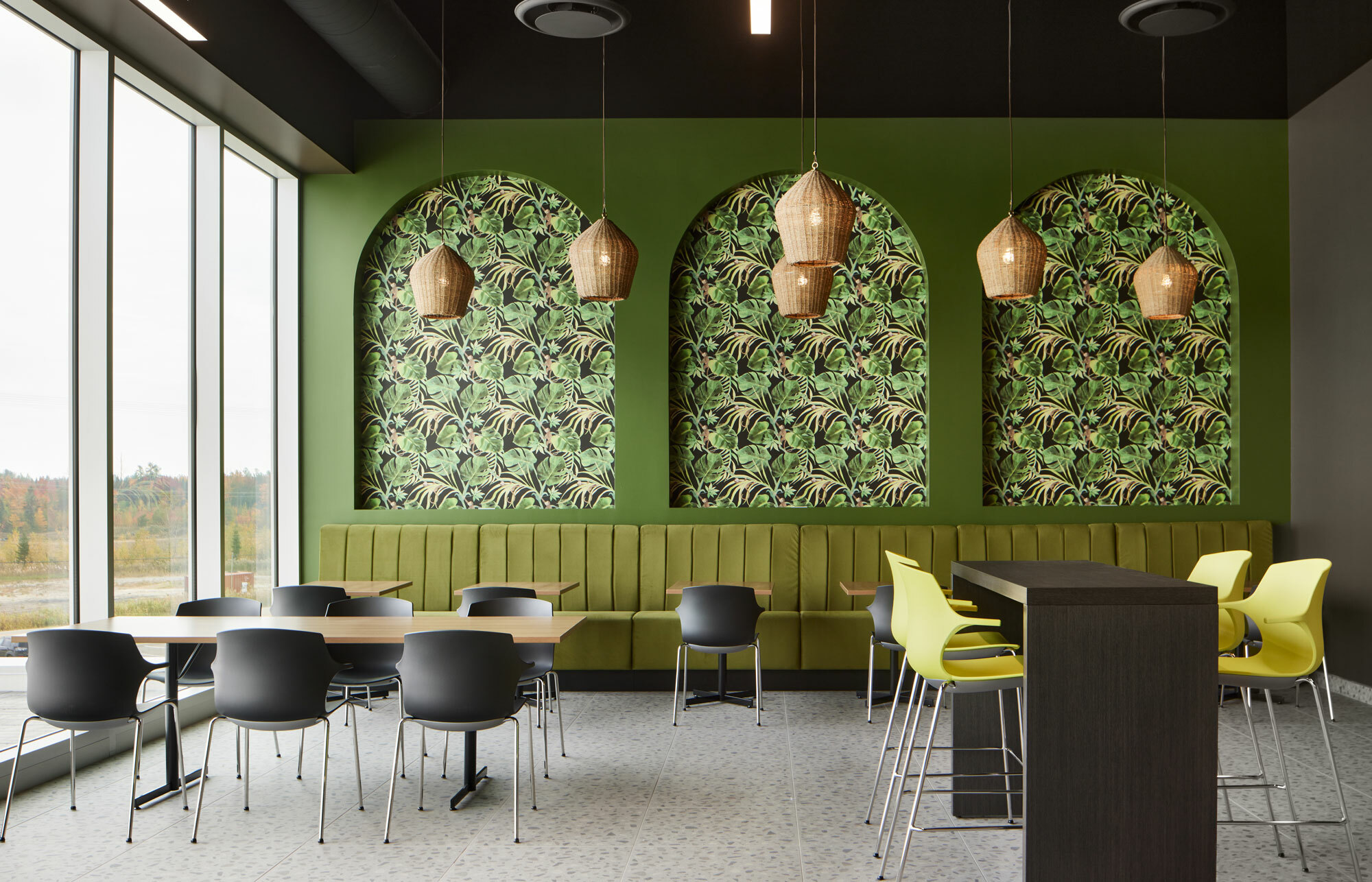There’s a long-standing divide on commercial job sites: the contractor in boots and the designer with swatches. One is seen as practical, the other, well… not so much. But that gap? It’s a problem worth closing because great commercial projects depend on both sides working in sync.
At Studio Forma, we’ve worked on offices, healthcare facilities, restaurants, educational institutions and retail spaces across Ontario. What we’ve learned is this: interior design isn’t just about finishes. It’s a strategic tool that can make or break a construction timeline, budget, and client satisfaction.
The Friction Points
Contractors have a list of frustrations when it comes to designers. We’ve heard them, and we’ve seen the results: no clearance for electrical rough-ins, misplaced data drops, materials that are impossible to source in Canada, and kitchenettes drawn up without plumbing in mind.
These aren’t aesthetic issues they’re construction issues. And when they’re not caught early, they cost time, money, and goodwill.
How Good Designers Keep Jobs Moving
Solid design teams think like builders. At Studio Forma, we make sure that everything we draw can actually be built. Our plans are clear, detailed, and aligned with trade expectations. That means:
- Electrical and millwork plans that coordinate, so switches don’t land behind custom cabinetry
- Realistic lighting plans, based on actual ceiling conditions
- Sourced materials with local availability and commercial-grade durability
- Furniture layouts that reflect how the space will be used, not just how it looks on paper
It’s design thinking that reduces callbacks, keeps inspections smooth, and helps contractors stay on schedule.
Give us a call and let’s get your project started.
905 252 0947
Flagging Problems Before They Hit the Field
We’ve all seen designs that look great in a rendering but fall apart in the field. We actively look for those pitfalls:
- Are the ceiling heights and MEP clearances accounted for?
- Does the millwork have proper access to power and data?
- Are the finishes suitable for healthcare regulations or restaurant traffic?
We walk through every detail so you’re not making changes at the eleventh hour.
Building Partnerships with Contractors
We believe that the most successful jobs happen when designers and contractors act like partners not competitors. That means:
- Being responsive when your onsite and when questions come up
- Getting submittals reviewed quickly
- Adjusting plans when site conditions demand it
Good design isn’t precious. It’s practical. And when both sides respect each other’s expertise, everyone wins.
Frequently Asked Questions (FAQ):
How does early collaboration between contractors and interior designers benefit office interior design?
Early collaboration ensures that contractors and interior design elements are fully integrated, reducing costly changes and creating more cohesive and functional spaces.
Why is Canadian made furniture important in commercial interior design?
Canadian made furniture offers superior quality, supports local industry, and aligns with sustainability goals, making it ideal for office furniture design and modular solutions.
What should contractors look for in an interior design partner?
Seek out interior designers with expertise in space planning, technical documentation, material selection, communication, and a commitment to commercial design collaboration.
Key Takeaways
Contractors know when they’ve got a good designer on the team. It’s the difference between frustration and flow. Between change orders and confidence.
At Studio Forma, we bring the technical know-how and the design vision to keep your job running smooth from permit sets to punch list.

